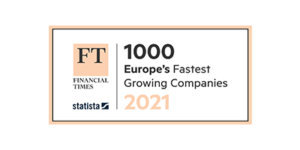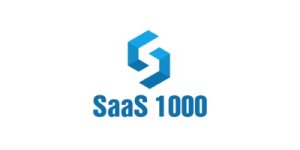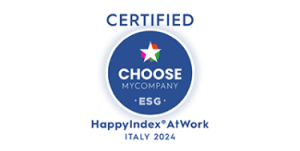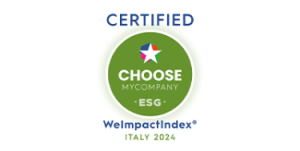
The Growens Design Community turns one
Human-centered design has the human at the centre. At the heart of the Growens Design Community there are human beings who care about other human beings. Design is just a way to create something intentional and meaningful together.
Last year, we talked about the kick-off of Growens’ Design Community. Now, on the occasion of its first anniversary, it’s time to take stock of the progress, achievements and milestones we have unlocked.
Wait, what is the Growens Design Community?
The Growens Design Community is an environment for designers and non-designers that allows cross meetings and pollinations in a way that is associative and not hierarchical. We welcome people that work in or with the same competence field and want to grow together.
The Design Community is the people who form it:
- All the designers of the Growens business units and Holding departments – 14 siloed professionals one year ago, today 24 people who found new common grounds.
- Managers of designers and people who work with designers
- Anyone interested in being included in this super inclusive and enthusiastic “place”
One year of activities
The first year of the Design Community was about finding its identity and laying the foundation of the following years’ work.
Its goal is to enable designers to share knowledge, support each other and relate to each other in order to have more consistency of practice and growth along all the product lines.
We want our designers to learn and grow, to build a trusting context where to reach out freely to people, ask, share and, in the end, do good to the business, the Group, the world and all the people out there.
Here is a recap of the main activities that were carried out successfully.
Identity building
We designed our goals and values and we met to start knowing each other better. We asked ourselves “what do our corporate values mean for a designer?”, and here are the results.
Passion
- Storytelling: the power of the narrative
- Creativity: encourage imagination
Caring
- Human-centricity: making design decisions based on how people can, need and want to perform tasks.
- Empowering: supporting each other
Open-Mindedness
- Improvement: be open to improves
- Collaboration: break down silos and collaborate with other designers
Trust
- Measurability: reliability of the design metrics
- Transparency: an clear approach
Training
As mentioned, learning and upskilling are among the main goals of the Design Community. Training sessions for designers and non-designers were organised both by leveraging competencies already present inside the Group and by tapping into external experts and resources.
Here are some of the topic covered during the course of the year:
- Design Metrics and ROI
- Information Architecture
- Analytics for Design
- Survey Design
- Basic Human-Centered Design
- UX writing
- Design thinking
- Customer journeys
Digital library
Books and free conferences are the best way to promote asynchronous, individual upskilling. The Design Community worked collectively at creating a digital library where everyone is welcome to borrow from and add to the collection.
Method bank
We work to make everything that designers learn available to others, designers and non-designers, now and in the future. This is embodied in our digital method bank – a collection of methods, case studies, templates, problems solved by the collective intelligence with hackathons and design critiques.
Conversations
“Breakfast & Learn” events are 30-minute internal meetings where designers (and not only) are welcome to share and discuss on a variety of topics. Over the course of the year, meetings covered topics such as:
- Dark mode email design
- Design for accessible emails
- Autistic people and digital ecosystems
- Designing journeys not just holidays
- Designing for the climate
- Designing habits
Conferences & in-person meetings
Community relations are not built just through digital channels: meeting in person is important, so the Community strived to organise get-togethers and daytrips compatible with anti-Covid-19 regulations. We visited museums and exhibitions, and met at co-working spaces.
Next steps
The results achieved till here are clearly felt by all the designers that have been here for enough time to appreciate the change: many colleagues can tell that there is a before and an after the Design Community.
But the results can be also measured: the Design Community has grown in numbers because the business units have invested more in design competencies, design operations and with more and more defined roles.
So what’s next? 2021 is the year of consolidation with caring.
We want to solidify what we have started last year:
- Enlarging the platform to the newcomers into the Design Community and promoting their voice and point of view – they are a treasure because their point of view is fresh.
- We want to bring awareness to design colleagues in order for them to share more of their success and failure stories. We know that the real learning is when you teach, so we would like to build an environment that transforms the “knowledge” sharing into “wisdom” sharing.
- Bringing the activities and events to a hybrid environment. The challenge, now that the pandemic is at a stage that allows us to see the light for our societies and that full remote work is again a choice, is to re expand our presence as a community by repossessing our physical spaces with tangible signs that are left behind by the design thinking and acting (paper post-its, flipboards full of wireflows, Lego Serious Play, book-crossing – WE MISSED YOU!) but without just “going back” to before the forced remote. Creativity can help us in being inclusive to everybody considering the current “on-and-off”-life.
- We want to make our activities and outcomes more and more effective for non-designers. Methods that are not a “how to do one activity” but help people to build a framework of design to solve complex challenges.
- Last, but not least, we need to support our designers in managing their new position into their multidisciplinary teams. Creating more centrality for the design means bringing people out from their operative comfort zones, into an environment that allows but also asks them to contribute not just with their craft. This is connected to a leadership program the whole Group is working on. We need to become not just better designers, but better design leaders, even when we are junior designers.
Article by Chiara Scesa
Group Design Lead at Growens





